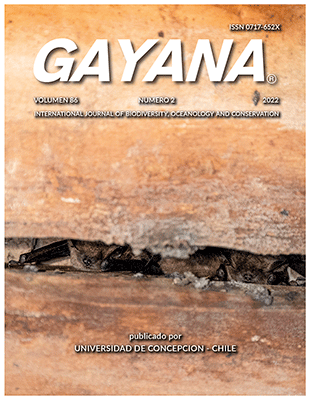Abstract
Tracking and monitoring of bat populations have frequently involved the use of inappropriate marking methods. Due to their small size, passive integrated transponders (PIT-tag) provide a permanent mark for small vertebrate species through their sub-dermal implantation. However, few studies assess their effects on bats. Here we present the first study on the effect of PIT-tags on bats in Latin America. We evaluated the effect of the use of PIT-tag as a permanent mark on the recapture rate and body condition in Myotis chiloensis and Tadarida brasiliensis in central Chile. For both species, we marked a group of individuals with PIT-tag and left an equivalent group without a mark. In six surveys, between January and March 2019, we captured a total of 262 individuals, 176 corresponding to the species M. chiloensis and 86 to T. brasiliensis, with a total of 43 and 33 recaptures, respectively. The use of PIT-tag had no effect neither on the recapture rate nor body condition for both bat species. Although more investigations are required, our results suggested that the use of PIT-tag as a marking method is adequate and safe for this bat species and it could be implemented in long-term studies.

This work is licensed under a Creative Commons Attribution-NonCommercial 4.0 International License.
Copyright (c) 2022 Martín A. H. Escobar, Francisca Puelma-Diez, Nélida R. Villaseñor

